This is a drawing of Jupiter and its magnetosphere showing the magnetic field lines, the Io torus, and the plasmasheet (part of the plasmasphere)
Click on image for full size
JPL
Saturn's Plasmasphere
Saturn's plasmasphere is pretty big. Most of the plasma comes from the donut-shaped cloud (torus) of material from Titan and the other icy moons.
Besides ions and electrons, the plasmasphere also contains very energetic particles, which contribute to the radiation found in this environment.
Particles enter the plasmasphere from the atmosphere as well as the magnetotail. Particles leave the plasmasphere when they drop too far along the magnetic field lines at the north and south poles. When these particles collide with the atmosphere, they create the aurora.
You might also be interested in:
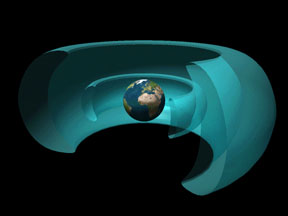
The Earth's radiation belts are one component of the larger and more complex system called the magnetosphere. The radiation belts of the Earth are made up of energetic, electrically charged particles or
...more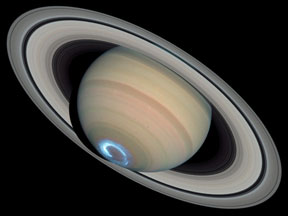
Have you ever seen the Southern or Northern Lights? Did you know that Earth isn't the only planet that puts on these beautiful light shows, also known as the "aurora"? Auroral displays have also been observed
...more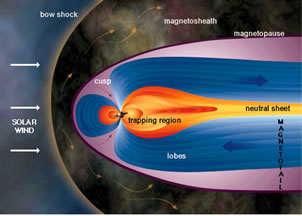
Saturn's magnetosphere is not as big as Jupiter's, but is very large nonetheless. It extends well beyond the orbits of Saturn's moons. It is probably generated in the same manner as is Jupiter's, which
...more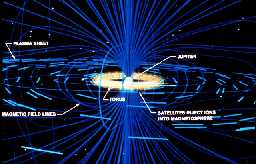
Saturn's plasmasphere is pretty big. Most of the plasma comes from the donut-shaped cloud (torus) of material from Titan and the other icy moons. Besides ions and electrons, the plasmasphere also contains
...more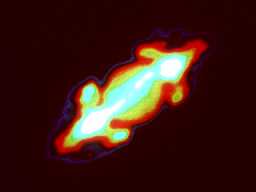
Radio signals are a signature of activity within the magnetosphere. There are two kinds of waves in the Saturn environment; Saturn Kilometric Radiation (SKR), and Saturn Electrostatic Discharges (SED).
...more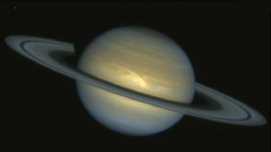
The most important motions in the atmosphere are winds. The major winds in Saturn's atmosphere are the zonal winds which are composed of alternating belts and zones flowing in opposite directions. Belts
...more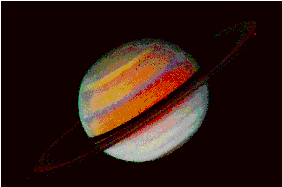
The striped cloud bands on Saturn, like Jupiter, are divided into belts and zones. In a belt, the wind flows very strongly in one direction only. In a zone, the wind flows very strongly in exactly the
...more














